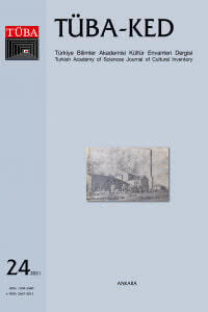PUBLIC SPACE AS CULTURAL RESOURCE
___
ALTMAN, I., & CHEMERS, M. M. (1980). Culture and Environment, Cambridge: Cambridge University Press.BENDIX, R. (1977). Max Weber: an intellectual portrait. Berkeley: University of California Press.
CALAME, J. & CHARLESWORTH, E. (2009). Divided cities: Belfast, Beirut, Jerusalem, Mostar, and Nicosia, Philadelphia: University of Pennsylvania Press.
CORVALAN, A. & VARGAS, M. (2015). Segregation and Conflict: An Empirical Analysis. Journal of Development Economics, 116 (C), 212–222. doi: 10.1016/j.jdeveco.2015.05.002
D’ALESSIO, V. (2007) Divided and Contested Cities in Modern European History. The Example of Mostar, Bosnia-Herzegovina. In Divided and Contested Cities, 451-478.
ESTEBAN, J., MAYORAL, L. & RAY, D. (2012). Ethnicity and Conflict: An Empirical Study. American Economic Review, 102(4), 1310-1342. doi: 10.1257/aer.102.4.1310
GEHL, J. (2006). Life between Buildings: Using Public Space (J. Koch, Trans.). Copenhagen: The Danish Architectural Press.
HILLIER, B. (1998). Space is the Machine: A Configurational Theory of Architecture. Cambridge: Cambridge University Press.
HILLIER, B. (2008) Space and Spatiality: What the Built Environment needs from Social Theory. The International Journal of Research, Development and Demonstration, 36(3), 216-230. doi: 10.1080/09613210801928073
JACOBS, J. (1961). The Death of Life of Great American Cities. New York: Random House.
LOZANO, E. E. (1993). Community Design and the Culture of Cities. Cambridge: Cambridge University Press.
LUCHETTA, A. (2009). Mostar and the Loss of its (partial) Uniqueness: A History, 1990-2009. Geneve: Geneve University.
LYNCH, K. (1960). The Image of the City. Cambridge: MA Joint Center for Urban Studies.
MITCHELL, D. (2003) The Right to the City: Social Justice and the Fight for Public Space. New York: Guilford Press.
PAŠIĆ, A. (2004). A Short History of Mostar. Conservation and Revitalization of Historic Mostar, 5-12. Geneve: The Aga Khan Trust for Culture.
RAPOPORT, A. (1977). Human Aspects of Urban Form. Oxford: Pergamon Press Ltd,.
TUAN, Y. (1977). Space and Place; The Perspective of Experience, Minneapolis: University of Minesota.
WHYTE, W. (1980). The Social Life of Small Urban Spaces. New York: Project for Public Spaces.
YARWOOD, J. (1999). Rebuilding Mostar: Urban Reconstruction in a War Zone. Liverpool: Liverpool University Press.
ZIVALI, T. (2013). Bridging the Bulevar; Transforming the Former Frontline in Mostar by Using the Existing Public Space in the City. Delft: TU Delft.
- ISSN: 1304-2440
- Yayın Aralığı: 2
- Başlangıç: 2003
- Yayıncı: Türkiye Bilimler Akademisi
PUBLIC SPACE AS CULTURAL RESOURCE
GEÇMİŞTEN GÜNÜMÜZE GAZOMETRE YAPILARI VE DOLMABAHÇE GAZOMETRESİ İÇİN OLASI İŞLEVLENDİRME ÖNERİLERİ
Halet Almıla ARDA BÜYÜKTAŞKIN, Elif TÜRKEL
KÜLTÜREL KAYNAK OLARAK KAMUSAL MEKÂN
İSLAM DÜNYASINDA BİYOGRAFİ YAZIMI VE RESİMLENMESİ
ERKEN CUMHURİYET DÖNEMİNDE KAMUSAL MEKÂNDA MODERNLİĞİN TEMSİLİ: ISPARTA KENTİ ÖRNEĞİ
TARİHİ BİR SU YOLU AKSI: URFA HALİLÜRRAHMAN SU YOLU GÜZERGAHININ MİMARİ DOKUSU VE KORUMA SORUNLARI
Hatice Kübra İLHAN, Tülay ÇOBANCAOĞLU
LIVING CONDITIONS IN HOUSES OF ISTANBUL DURING THE 17TH CENTURY: A READING OF KADI REGISTRIES
SMYRNA/İZMİR KIRSALINDA YER ALAN BAZI SAVUNMA YAPILARI ÜZERİNE BİR DEĞERLENDİRME
Hakan GÖNCÜ, Burak YOLAÇAN, Akın ERSOY
İZMİR SARIKIŞLA’NIN İNŞA EVRELERİ
H. İbrahim ALPASLAN, E. Aysu GÜLENÇ
17. YÜZYIL BOYUNCA İSTANBUL EVLERİNDE YAŞAM KOŞULLARI: KADI SİCİLERİNDEN BİR OKUMA
